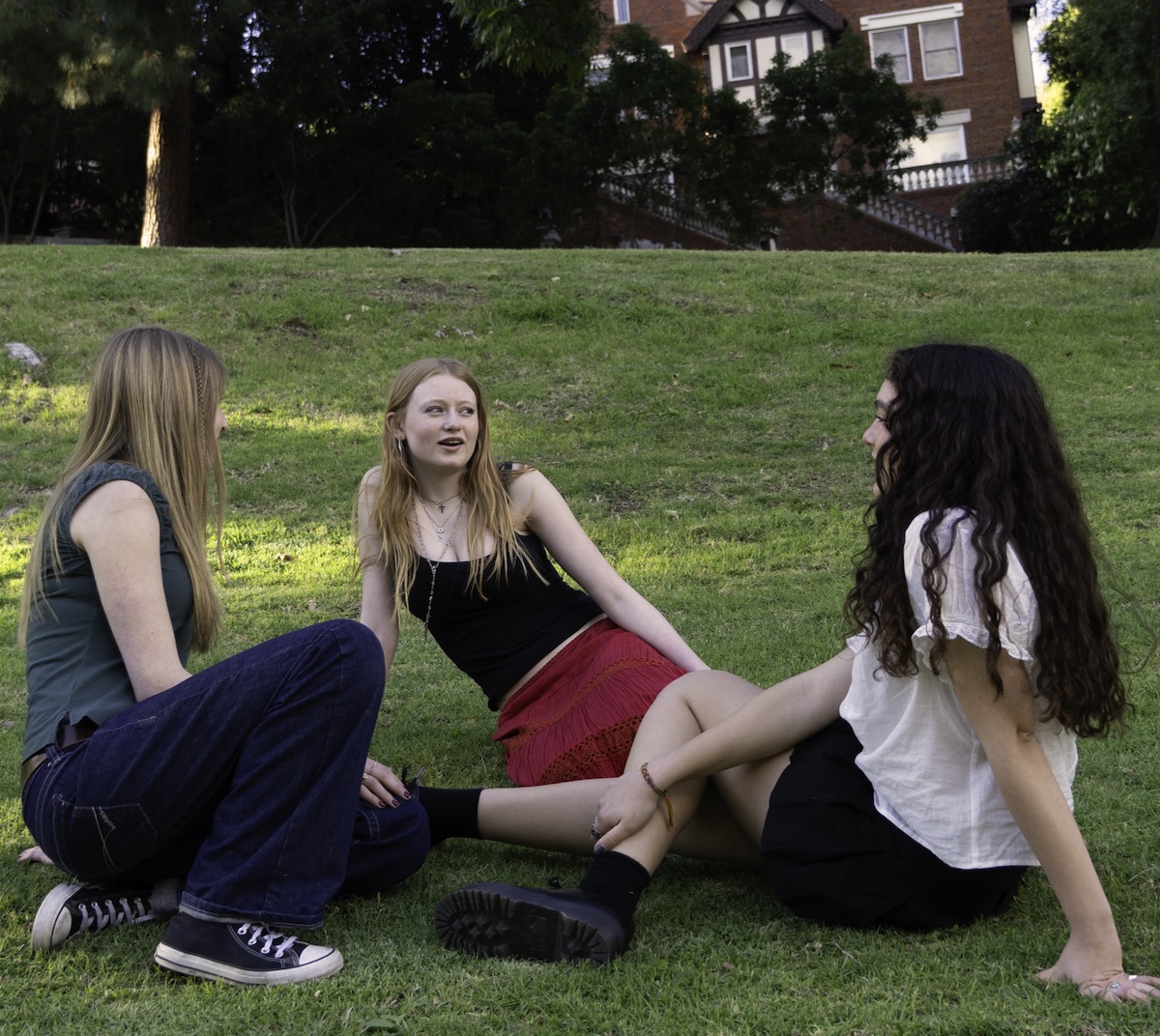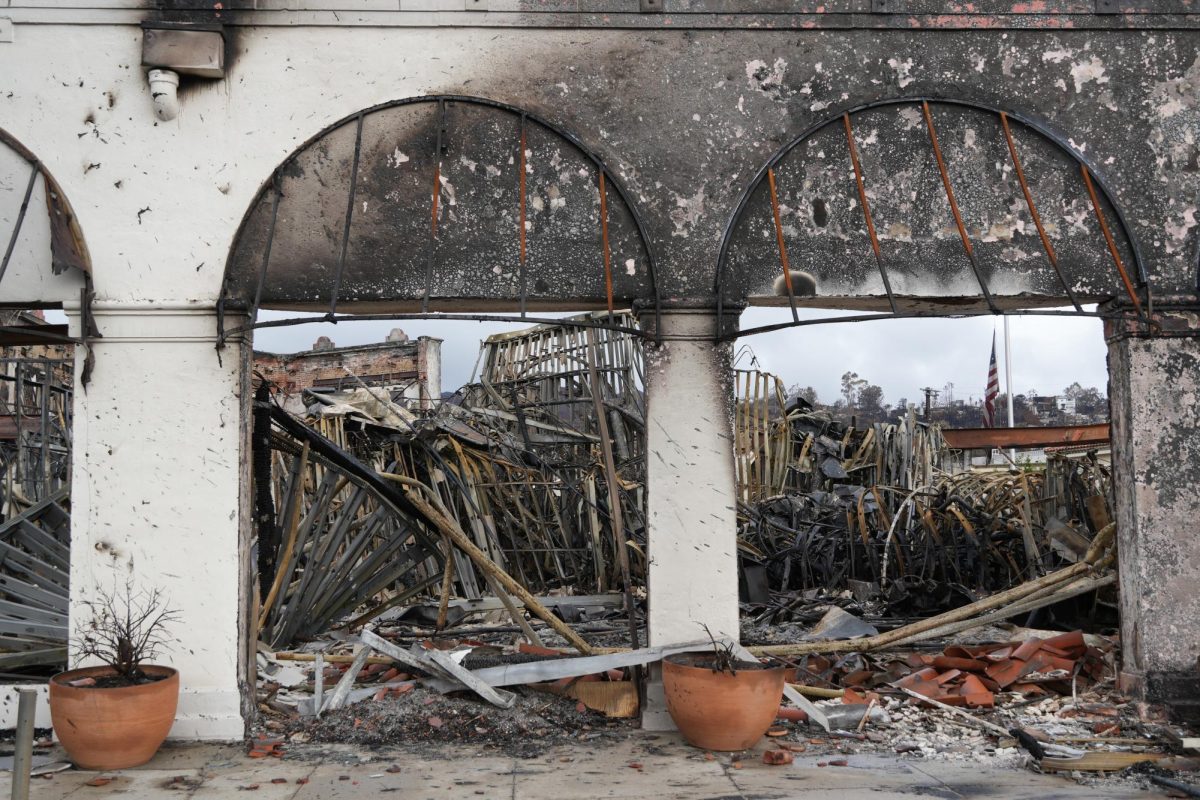
By Maddy ’15 and Nina ’16
In 2014, the United States witnessed a dramatic increase in unaccompanied immigrant children braving the journey north from Central America through Mexico to reach American soil. According to Jaime Ruiz, Spokesperson of Customs and Border Protection in Los Angeles, 68,451 minors were apprehended in fiscal year 2014, compared to 38,759 minors in 2013, a total increase of 77%.
The path to the U.S. can be treacherous. Children must undergo long treks fraught with robbers, gangs and aggressive police officers. The young immigrants are often victims of rape and murder. Paid smugglers can help traffic children into the U.S. for a high sum, but the minors might still be lost or abandoned along the trip. Most risk their lives by clinging to La Bestia—“The Beast”—the train that travels north through Mexico toward the U.S.
This past summer, President Barack Obama wrote a letter to Congress asking for funding to tighten control on the U.S.-Mexico border and for laws to be created to expedite the deportation process. With the midterm elections giving the Republican Party, commonly thought of as resistant to pro-immigration measures, a majority in both the House and the Senate, the debate on immigration will inevitably heighten during Obama’s final two years in office.
Michael Soller, Communications Director at Public Counsel, which provides pro bono legal services and regularly works with immigrants trying to remain in the U.S., reminded:
“Young people’s problems don’t stop. Their lives don’t just suddenly become better. They still have to deal with, you know, the trauma that they experienced, and they have to deal with starting over.”
What are the motivations for the recent influx of child immigrants into the U.S.? What are the national policies concerning immigrant children, and how do they fit into the legal system? How are agencies in Los Angeles helping immigrant children?
PUSHES AND PULLS
The increased influx of immigrants from Central America stems from both “push” factors away from their home countries, such as violence and natural disasters, as well as “pull” influences to the U.S., such as economic opportunity and reunions with family members.
Soller observes that many immigrants are escaping the threatening presence of gangs.
“We’ve really seen a change in the past year in reasons why children are coming to the U.S…You know, children would come to be reunited with parents who maybe had left earlier… because now children often are fleeing extreme violence. They’re fleeing gang intimidation,” Soller said.
He explained that in several Central American countries, gangs terrorize cities and create violent environments plagued by threats, murder, rape and abundance of crime. Some gangs recruit and kidnap girls into sexual slavery, often threatening the lives of entire families if the girls do not join.
Children also travel to the U.S. for better economic opportunities. According to The World Bank, America’s Gross Domestic Product (GDP) in 2013 was $16.8 trillion, while Honduras’s GDP in 2013 was $18.5 billion, showing the stark economic disparities between the regions.
“We believe that there’s an incentive to come to the U.S. for a sense of safety and opportunity…and they’re looking for better economic opportunity,” Ruiz states.
Familial reunion in the U.S. remains an underlying reason for minor immigration. Families who use smugglers, also known as coyotes, to bring more family members into the U.S. must pay these professionals large sums of money; according to Ruiz, some pay up to $3,000.
Eric Ruark, Director of Research at the Federation for American Immigration Reform (FAIR) affirms that children journey alone to reunite with parents, grandparents, or aunts and uncles, most of whom live in the U.S. legally.
“It wasn’t as if there [were] a lot of orphans who were coming into the U.S. because they had no other choice. Their parents were paying smugglers to bring them into this country so that they could reunite with them here in the U.S.,” Ruark explains.
GAINING LEGAL STATUS
An unaccompanied minor who has successfully crossed the U.S. border and entered the country usually encounters Border Patrol. If officers catch children, they take them to government-run holding cells along the U.S.-Mexico border.
In the detention facilities, Border Patrol tries to identify the children, determine whether the government has any record of them and determine to whom they are supposed to be released. Children remain under government custody when they leave the detention centers and are placed in shelters around the country run by the Office of Refugee Resettlement (ORR), three of which are located in Los Angeles. There, children receive schooling, as well as medical and psychological services, according to Caitlin Sanderson, Program Director at Esperanza Immigrant Rights Project. Sanderson also said that about 90% of the children in the shelters go live with a family member somewhere in the U.S. relatively promptly after entering a shelter. Sometimes children are placed in federal foster care homes.
Minors’ immigration cases continue throughout the custody transitions. Children immigrants hope to gain legal status or some kind of residency and protection through asylum or visas, for example. Arguably the most defining factor in determining the success of an immigration case is whether or not the child has an attorney. A recent CNN piece revealed that from 2005 to 2014, just ten percent of juveniles without attorneys acquired the right to stay in the U.S. in their court cases, while 47% of juveniles with attorneys did. Soller said that often children do not understand what the legal process is or how to steer through the courts and make their cases.
“The biggest failure is to recognize that young people have legal rights, too, and that those legal rights aren’t met when they go to court without an attorney. And it’s really as simple as that. We think one of the most positive things they can do is to get legal representation,” he said.
Children face not only the complexities of the legal system but emotional difficulties as well in defending their cases. Immigrant children fleeing gang threats, for example, may fear that telling their stories in court will lead to further abuse even in the U.S. A factor as simple as a language barrier can make some children reticent to speak up in court. A weakly presented immigration case will most likely lead to denied legal status and a deportation order instead.
“[Immigrant children’s] legal case[s are] going to determine whether or not they are allowed to stay here lawfully in the U.S., and if they lose their case, then they are most likely going to be deported back to their country and so their stay here is going to be temporary or, if they somehow evade immigration officials, they will be confined to living, you know, in the shadows for as long as they stay here,” Sanderson said.
Obama promised to take action on the issue, regardless of opposition from a Republican Congress.
“Before the end of the year, we’re going to take whatever lawful actions that I can take that I believe will improve the functioning of our immigration system,” Obama vowed.
WHO’S HELPING?
Agencies in the U.S. help unaccompanied underage immigrants transition. The ORR provides foster homes and services for children who do not have relatives in the U.S. The program currently cares for around 1,300 immigrants, only a fraction of those apprehended at the border.
Locally, programs such as CARECEN (Central American Resource Center) support child immigrants in the Los Angeles region. They provide job opportunities, education and legal services. The Esperanza Immigrant Rights Project and Public Counsel are Los Angeles-based organizations that provide legal services to immigrant children.
Sanderson asserted that helping immigrants is important largely due to trauma stemming from the long separation between the children and their parents as well as from the dangerous journey. She elucidated that the psychological counseling services are important for both the child and the family.
“There can be a lot of guilt and resentment—guilt on the parents that [any trauma] happened to their child while they were here in the U.S. and the child is back home and then resentment, again, on the part of the child for the parent having left them,” Sanderson articulated.
According to Soller, immigrant children, even illegal ones, are allowed in America’s public school system.
“Some schools are looking at how they can support young people who come without parents…They need someone to talk to, and they need to get caught up on school, to learn English. So the education in some ways is not that different from what schools do for foster youths or English language learners,” Soller explained.
Some, such as Ruark, believe that the U.S. government is overly conciliatory in abetting immigrant children once they are on U.S. soil.
“What our government did at border patrol assisted in completing the smuggling process. Once they got to the U.S., our government took the children and reunited them with their family members and completed the smuggling process,” Ruark remarked.
However, others, like Soller, believe that the government’s policies are for the greater good.
“I think that the government has done a lot of positive steps to help children, to help them as they transition into families, as they’re reunited with families,” Soller said.










